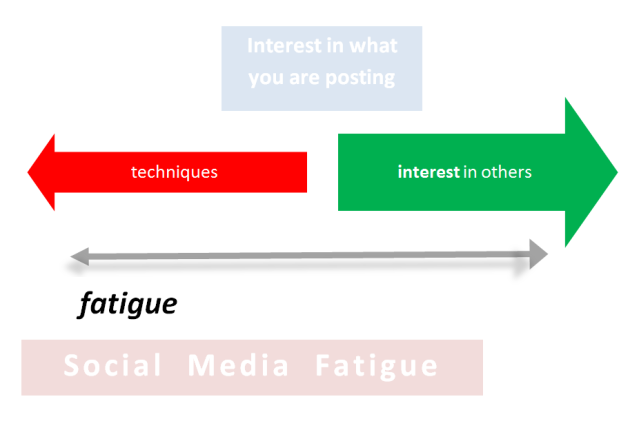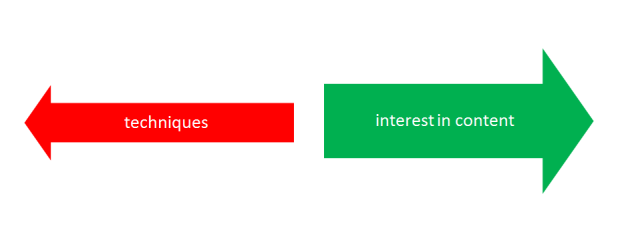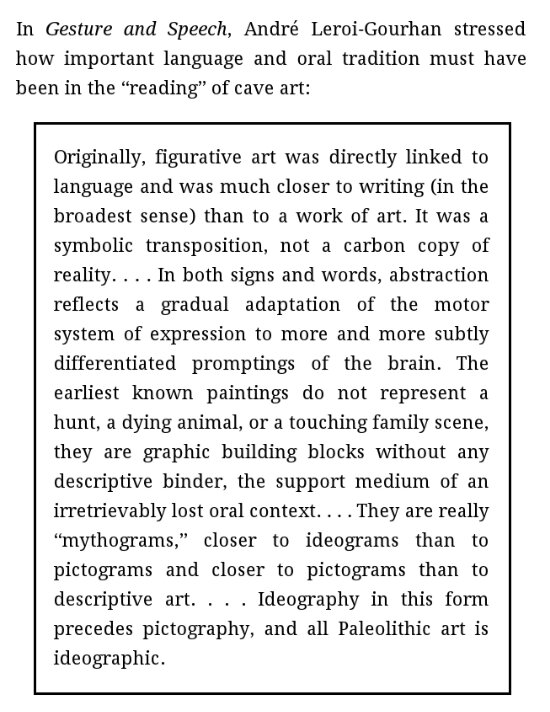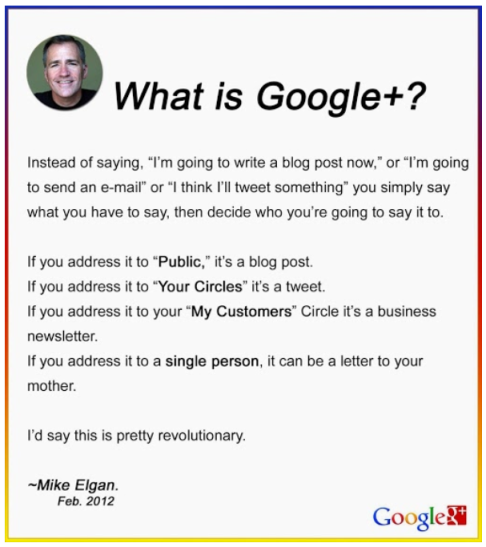You can comment on this post’s Google Plus thread here.
I haven’t blogged in some time, but this has been a growing theme for me, and it seems worth posing here as a benchmark, as these are deep, cultural and technology shifts worth talking about, especially in terms of human expectations of knowledge, and the promise of the internet. These are mostly thoughts posted at length, with some modification, on a Google Plus share of Mark Traphegan’s excellent blog post on Google Plus’s new Reach Numbers. One of the most interesting things he talks about is User Behavior Modification. Mark argues that Google must provide quality results otherwise people will stop using its product.
Google needs that content; helping the world to find information is Google’s stated mission. And users, to varying extent, need Google to help their content to be found or made visible.
So users have a high incentive to do whatever it takes to make their content more visible to other Google users. But Google has a counterbalancing incentive to filter that content, and try to maintain high quality levels. Why? Because if they don’t, people will stop using Google.
Over the years, Google has experimented with various ways of gently–and sometimes not so gently–pushing its users toward practices that help Google to more consistently deliver better content. This is what I call Google user behavior modification (UBM).
But, there is an alternate solution for Google to providing “quality” results.
Changing Expectations
What interests me is the most potent user modification that I’m seeing, which is the modification of expectation itself. Instead of Google having to do the heavily computational lifting of providing high quality content to everyone (the Star Trek computer, which knows all things), it actually makes much more economic sense if they can change the expectation and satisfaction level of users. This way Google can robustly provide a kind of McDonalds of products in the cuisine of knowledge and Internet consumption. We just need people getting hungry for McDonalds search and social.
How Search Has Changed
We’ve already seen it – dramatically I think – in Google SERPs. It is very odd to me that almost nobody is talking about the significant shift in search results quality over the last two years. Previously people would search, get a hodgepodge of results and then refine their search, and repeat. Google saw this process of search refinement as a kind of “failure” of the product, losing users in the process, when in fact it was producing a large group of users who became really adept at Googing, figuring out how to use keyword combinations and other cheats to wormhole through results and get fantastic, knowledge-rich pages. There were the Googlers, and then there were the not-so-Googlers. But what Google really needed was the not-so-Googlers, because Google primarily is a ad-selling company (somewhere around 60 Billion dollars a year, I believe). What was a rich and varied strength of the search product which produced an autonomy of users had to be changed.
The “Improvement” of the Algorithm – Reading Your Mind
The answer of course was an improved algorithm. We need an algorithm that can not only filter out spammy results, more importantly it had to read your mind and figure out what you really mean. David Amberland writes enthusiastically about this, and it is much celebrated. But there is another vector of solution that Google as been pursuing aimed to make the distance that Google’s IA dreams have to travel. What if Google was able to answer your question before it is completely formed or focused, in a sense nipping the flower of it in the bud? What if it gave you the experience of an answer, and experience that was “good enough” to stop you from re-querying?
Shortening Your Questioning
This is where the auto-complete started successfully steering you away from more complex query entries. You might have a pretty complicated, but still somewhat unfocused idea of what you are are looking for when you start typing, but as you start typing a much more simplified version of your question pops into view. This is great for Google because they don’t have to crunch such varied and lengthy queries, straining their computational and software limits. If we can get people asking the same, fairly simplified queries, then our job is easier.
Providing Satisfying Answers
Once you get people asking simpler questions you have to keep them from requery by giving them a satisfying end. A part of this is being able to “read minds” in the celebrated Semantic Search way, but an even bigger part of this is in providing “official” looking, pleasingly represented answers. This is where the Knowledge Graph comes in. The purpose of the Knowledge Graph, aside from moving towards the One Screen mobile need, is to just end querying. It is a counterpart of the simplification of queries themselves.
Playing With the Form of Results
If I’m not mistaken: You can see an even more aggressive version of these behavior modifying strategies in the way that Google is providing very different results in quoted phrasing. There was a time not long ago when you could very effectively requery by grouping words together in a phrase, and forcing the engine to push deep into its repository of pages. Now, instead, Google produces page results that simply do not contain all the words in your phrase…they show that one is missing by crossing it out. They are saying: I know you think you want pages with that phrasing, but these pages are much more popular even though they don’t contain the complete phrase…maybe you were mistaken in your query. Or even more forcefully, in cases of 3 word phrases they simply refuse to do the search itself, and remove the quotations.
I don’t know about you but I have experienced a dramatic restriction in results framed by date of publication. This was a very powerful research tool, and was invaluable when Google started pushing fresher and fresher content forward. If you wanted to know about a subject prior to the coloring events of 2013 you could just search pre-date. This option has been significantly curtailed. It’s as of the library of holdings, the history of the Internet itself has shrunk from view. In time the expectation of the fruitfulness of such a search will wither.
The Celebration of the Algorithm – a New Captain Kirk
There is in the Google Conversation community a kind of celebration of the Google Algorithm, a kind of Sci-Fi love of the kinds of things that Google is pushing for in terms of capacity. I’m a big fan of Sci-Fi and I could be capativated by the Star Trek computer as much as the next guy, or gal. But we are – I believe – turning a blind eye to how much Google (and Facebook to a lesser degree) is cleverly moving the goal posts, in a very subtle way. It would be as if Captain Kirk grew into the habit of only asking the computer how many people lived on the Cairn homeworld, or what time his Hangout with Federation Command was scheduled for. This dimension of behavior modification is immense, and even profound, given the promise of what the Internet hoped to be, a vast library of human knowledge, an infinite sedimented record of facts, activity and thought. What made Google Google was that it was a tool that we could use to navigate a very large, incredible and sometimes stormy sea. Part of what Google has been doing though, is shrinking that sea, and also encouraging us to maybe sail much closer to our harbor where waters are much more manageable and pacific.
How Google Plus Also Modifies Our Behavior
So this long digression into Google’s main property and service has to have something to do with Google Plus, right? From my view Google faced many of the same problems on Google Plus that it did in Search, and it has intelligently worked to solve them in a similar way. Initially it created a remarkable environment of thought and discussion, drawing powerful minds that just were not satisfied with Facebook social, wanted more depth than Twitter offered, and more speed and intimacy than blogging did. There was something Eden-like in how varied Google Plus was two years ago. Okay, everything changes right? But let’s think about these changes.
Much as Google Search had power re-Googlers and non-reGooglers, and the majority of users were not using Google creatively, they had autonomous power users on Google Plus, but also many more people were just putting their toe in the water; they needed to pull more and more people, and more and more content into the platform. They had to simplify it. Google had to produce a much more satisfying experience of it to a new user, especially if they were going to cut into Facebook. The marvelous eco-diversity of initial Google Plus was just too complicated, too varied, too dependent on the pre-existing relationships that power users brought into the platform fully formed (for me this was from Twitter). Add in that mobile use (which itself is a very simplified content use context) was becoming a dominant influence in Social, and you have extreme demands that Google Plus change dramatically.
The Algorithm Solution Again
Aside from very aggressive auto recommendation strategies for circling (which, parenthetically, were also amplified by its biggest proselytizing users in their circle shares), what really had to change was its streams. Popular content organized around simplified wants had to be pushed forward, otherwise Google Plus would just be populated by Social Media Pros and nerdists repeating how wonderful it is to each other. People need to see something engaging quickly when they come to G+, and in parallel they need simplify their expectations. When in the past inquiring users may have been in search of conversations or new ideas, but now one’s eye should search for a clever photo, an inspiring quote, a quirky headline. For the engineers at Google, if we can get people looking for the right kind of content on Google Plus we can get really good at delivering it.
Google Plus Has Improved
Google Plus has improved in some ways. Now older posts with some interesting conversation might be found by someone who hasn’t been on the platform in a while, for instance. But I don’t know about others, largely the substantive content I looked forward to in the past is simply buried in an avalanche of popular items and feeds. And even posters themselves have been slowly curved towards a different kind of content and expression. More than this, and with disappointment, the best Google Plus minds have focused their eye on the praises of the algorithm itself, instead of as members of the community and environment equally concerning themselves with the culture of Google Plus, what Google is creating by algorithm, through behavior modification of even its brightest members.
These are tectonic shifts in the very form of knowledge as it interfaces with technology, as important as changes in the form of the book.








